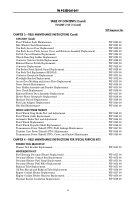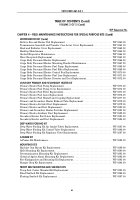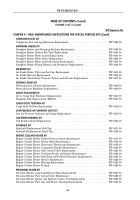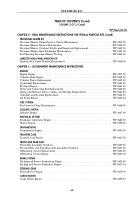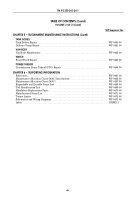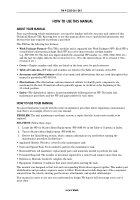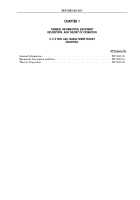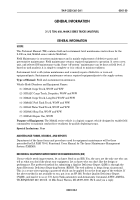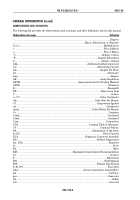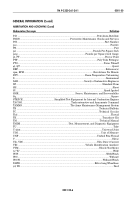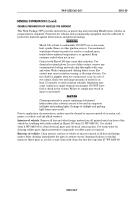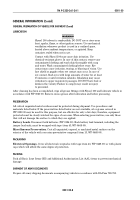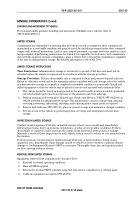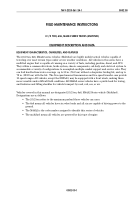TM-9-2320-361-24-1 - Page 30 of 1176
TM 9-2320-361-24-1
0001 00
0001 00-2
GENERAL INFORMATION (Contd)
0001 00-2
0001 00-2
0001 00-2
0001 00-2
EQUIPMENT IMPROVEMENT REPORT AND MAINTENANCE DIGEST (EIR MD)
The EIR MD, TB 43-0001-62, is a bulletin published quarterly to provide instructions for corrective
action to be taken regarding equipment faults reported through EIRs. In addition to EIR information, it
contains information on proposed MWOs, Warranty/Recall information, publication actions, some
resulting from DA Form 2028 (Recommended Changes to Publications and Blank Forms), engineering
tests, design activities, depot operations, and support maintenance activities such as improvement of
maintenance program planning and activities. To use this bulletin to your advantage, scan subject
matter of each issue for topics concerning M44A2 series trucks. Familiarize yourself with present or
projected actions that will affect your vehicle and this publication.
HAND RECEIPT
There is not a separate hand receipt for M44A2 series vehicles. For a complete list of end-item-related
equipment (i.e., COEI, BII, and AAL), refer to TM 9-2320-361-10.
CORROSION PREVENTION AND CONTROL (CPC)
Corrosion Prevention and Control (CPC) of Army material is a continuing concern. It is important that
any corrosion problems be reported so corrections and/or improvements can be made to future items.
Corrosion specifically occurs with metals. It is an electrochemical process that causes the degradation
to metals. It is commonly caused by exposure to moisture, acids, bases, or salts. An example is rusting
iron. Corrosion damage in metals can be seen, depending on the metal, in the form of tarnish, surface
residue or oxidation, pitting, and perforation.
Plastics, composites, and rubbers will also degrade. Their deterioration is caused by exposure to heat,
oxygen, solvents, or light (typically ultraviolet). An example is deteriorated rubber weather stripping.
Degradation from excessive exposure of these elements can be seen in the form of shrinkage, hardening,
cracks, and breaks.
If a corrosion or degradation problem is identified, it should be reported using SF 368, Product Quality
Deficiency Report. Use of key words such as corrosion, rust deterioration, and cracking will ensure that
the information is identified as CPC problem.
SF 368 should be submitted to the address specified in DA PAM 750-8, Functional Users Manual for
The Army Maintenance Management System (TAMMS).
OZONE DEPLETING SUBSTANCES (ODS)
The continued use of ODS has been prohibited by Executive Order 12856 of 3 August 1993. The use of
ODS in Army equipment is prohibited.
Back to Top

